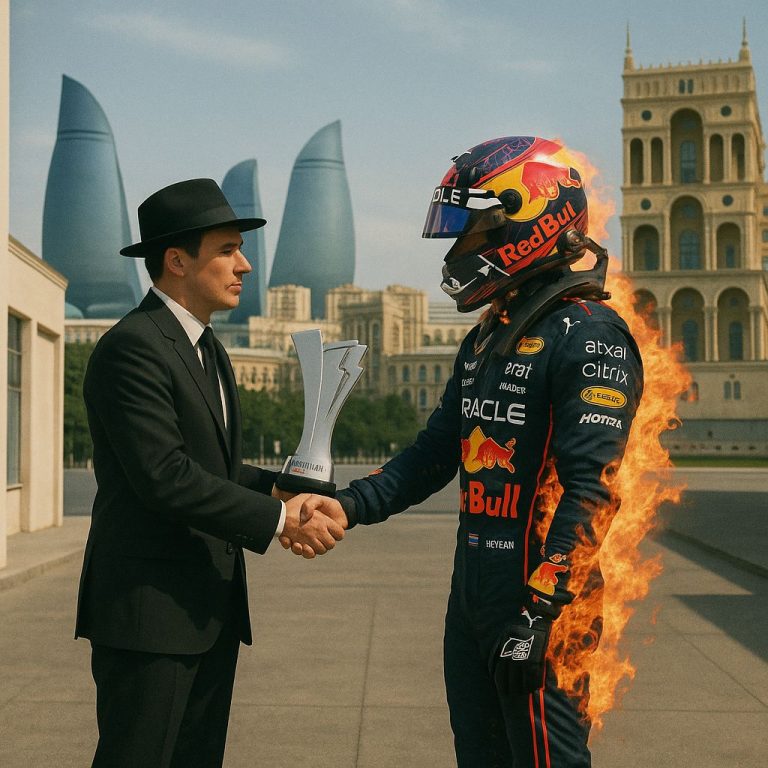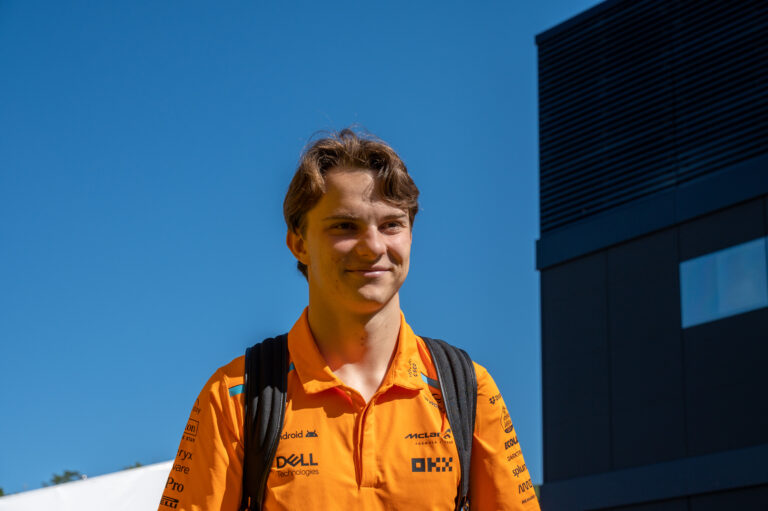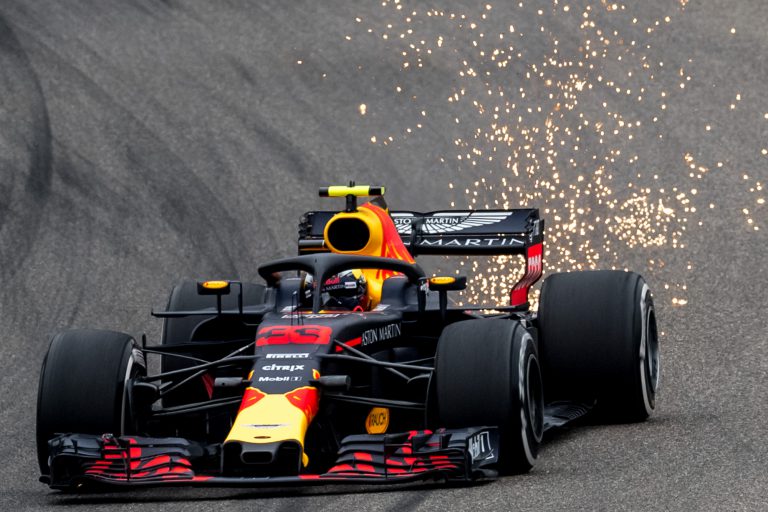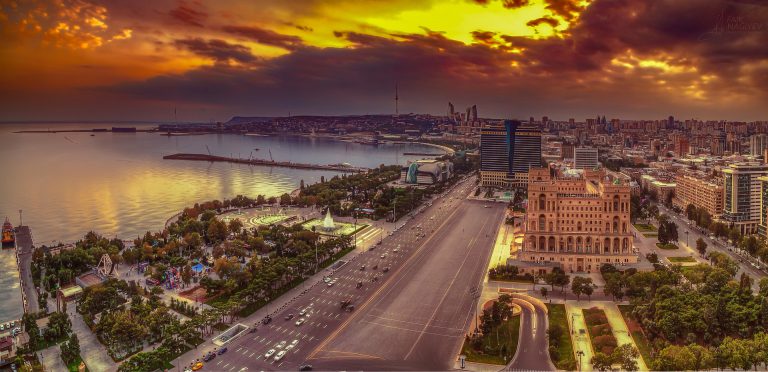Azerbaijan’s Formula 1 History of Race Tracks, Teams, and Drivers

TABLE OF CONTENTS
Formula 1 cars drive as quick as the wind and how fitting is it that a Grand Prix is hosted in a city whose nickname is the “City of Winds. Formula 1 has been visiting the capital city of Baku in Azerbaijan since 2016. Baku made its first appearance in F1 hosting the European Grand Prix in 2016, which was declared a success, helping the city become a mainstay on the F1 schedule from 2017 until today.
Baku has a long history of hardship and was once part of the USSR and became an independent nation in 1991. Azerbaijan has used its vast amount of oil reserves to turn Baku into the most developed and only metropolis in the small country that sits on a peninsula on the Caspian sea.
PLENTY TO SEE
The weather in Baku respects the four seasons with temperatures varying all year round. Temperatures almost never hit below zero in winter and in summer, average temperatures can hit thirty degrees. The architecture in Baku is a blend of old historical buildings with incredible skyscrapers that seem to defy gravity.
Littered across the temporary street circuit used in Formula 1 drivers and fans watching at home will notice many landmarks such as the maiden tower which is considered to represent the city and was built in the 11th century.
The GP takes place in the Old City of Baku where the streets and alleyways create a narrow labyrinth that can be challenging to deal with on foot let alone in a Formula 1 car. Let’s take a look at the Baku City Street circuit in more detail below.
TRACKS
BAKU CITY CIRCUIT
Joining Formula 1 in 2016 the Baku City Circuit was and is one of the most difficult tracks in the calendar for drivers to tackle. Hosting only five races so far there have been five different winners adding to the mystique of the uncertainty of who will come out on top.
INSIDE THE NUMBERS
The track was designed by German Herman Tilke and takes place within the walls of Old Baku City. The track is one of the longest in F1 with a length of 6.003km and requires drivers to survive fifty-one laps to reach the finish line, completing the race distance of 306.049km. Ferrari’s Charles Leclerc from Monaco has the fastest lap accomplished in 2019 with a time of 1:43.009.
SPLIT PERSONALITY
F1 drivers have to contend with an interesting layout that mixes very slow and twisty areas on the track and contrarily a very long straight that has drivers hitting speeds of 350km/h. Getting the setup of the car correctly is a challenge and sacrifices need to be made based on what the team’s goals are. With more downforce or with more top speed, finding the right balance between them does not guarantee you will survive the race.
TIGHT AND TWISTY
The track, which includes twenty turns, can get extremely narrow, making it extremely unforgiving for any minute driving error. Monaca and the Saudi GPs are similar in scope and in all three races concentration and focus is just as important as getting the car set up correctly.
The race runs counterclockwise and features two DRS zones with the first beginning after Turn 1 which is a sharp ninety-degree left-handed turn where at the beginning of the race action is guaranteed. The first DRS zone blasts drivers into turn 2 which is another ninety-degree left-hander leading into a long straight.
Drivers will need to test their brakes again in Turns 3 and 4 which incorporate a ninety-degree left-hander, a short straight, and a right-handed ninety-degree turn. Hitting the throttle won’t last heading into the chicane of turns 5 and 6. Drivers will accelerate quickly out of the chicane only to be confronted with a narrow hairpin where you can see the landmark building of the Maiden’s Tower.
The next portion of the track is an elevated one that heads into one of the tightest corners that have drivers thread the needle between two walls in turns 8,9 and 10. Turn 11 quickly forces drivers right leading immediately into turn 12, another sharp left-handed ninety-degree turn. The next portion of the track is where speed begins to increase, becoming the faster sector of the circuit.
Turn 13 is a slight left-hander that leads to turn 14 which is a light left-handed bend in the track. Still driving at a good pace, the driver will still need to contend with another left-hander in turn 15. Another short straight awaits drivers before heading into another sharp left-hander in turn 16.
Now drivers are driving along the coast of Baku and their pace will continue to pick up speed. Turn 18 and 19 create a slight left-right chicane before drivers go full throttle flying at 350km/h. The final turn is a slight bend of the track that does not hinder drivers in the least.
The second DRS zone is from Turn 20 crossing the finish line and heading into turn 1. The track is extremely challenging in sectors 1 and 2 where most drivers will either hit a wall or bump into each other.
WHERE TO WATCH FROM
Fans can enjoy the race sitting in over thirteen different grandstands which can hold a capacity of at least seventy thousand spectators. The most ideal grandstand is on turn one where at the start of the race you will see the whole pack trying to survive the tight corner and gain valuable potions.
It comes as no surprise that you can expect to have some yellow flags and safety cars throughout the race and it isn’t out of the realm of possibilities that a red flag and restart will happen.
TEAMS
Azerbaijan has not produced any Formula 1 teams in history.
DRIVERS
There have never been any drivers who have come from the country of Azerbaijan in Formula 1.
TRAVELING TO BAKU
If you are an F1 enthusiast and thinking of visiting one of the more unique settings for a Grand Prix race, visiting Baku should be considered. Azerbaijan is primarily Muslim but the government is and the country is a secular state. It is always recommended to learn more about the laws and societal norms of any country you visit and Baku is no different.
HAVE A PARTY
Baku is considered one the best cities in the world to party in offering plenty of bars and nightclubs to choose from. A great spot to not only experience the nightlife and taste the amazing cuisine that has a middle eastern flair to eat is to visit Fountain Square. While you’re not at the race you can visit plenty of museums and unique sites such as the Baku Museum of Modern Art, Caravanserai, and numerous skyscrapers.
JUST LOOKUP
The skyscrapers will leave you in awe over the architectural and engineering skills used to construct such buildings. The Flame Towers, Baku Crystal Hall, SOCAR Tower, and the Azersu tower are something to see and can’t be missed.
Baku in many ways is a hidden gem that Formula 1 has helped bring to light. F1 fans cannot only enjoy the incredibly difficult street circuit but can also enjoy the amazing city of Baku.









